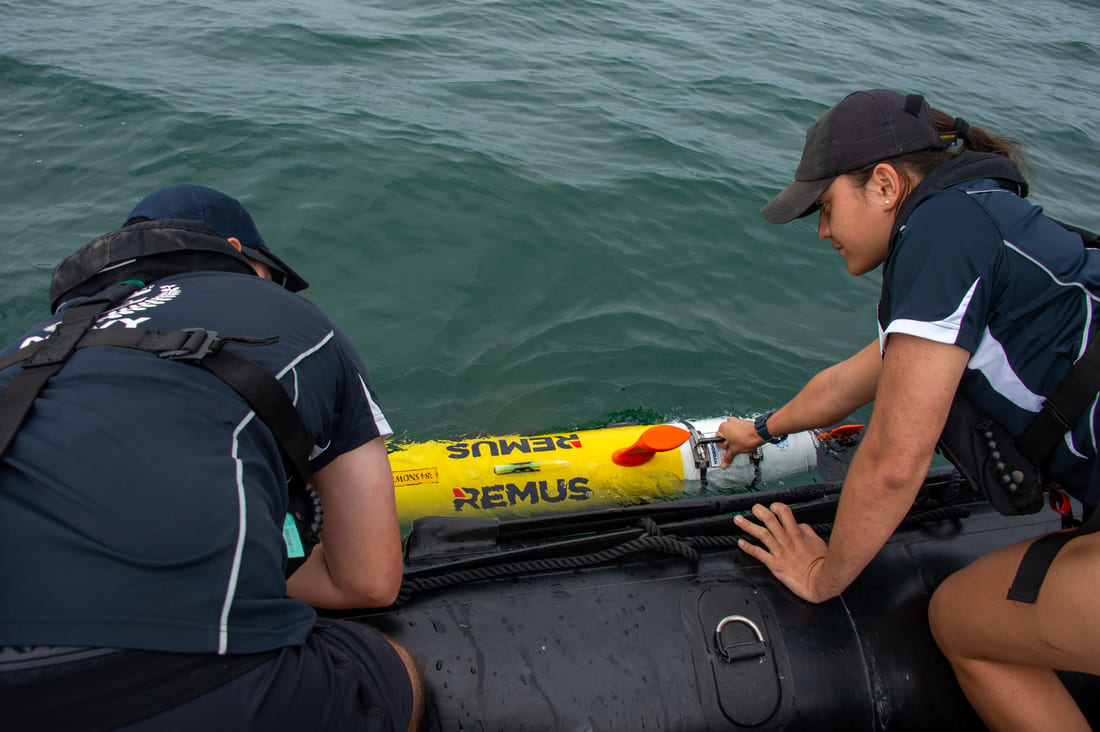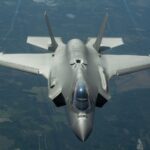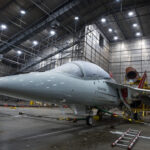SESIMBRA, Portugal — REPMUS and Dynamic Messenger 2025 ran through September off Tróia and Sesimbra. European crews, NATO commands and industry teams paired submarines, frigates and patrol craft with autonomous vehicles and trial software. The Portuguese Navy hosted with NATO organizations in support. Exercise staff recorded more than two hundred autonomous and remotely operated systems in the water and in the air, with participating forces drawn from across Europe and North America.
The combined event ran live vignettes for mine countermeasures, seabed surveys, undersea infrastructure security and anti-submarine warfare. Command oversight came from NATO maritime elements and Portuguese centers at Tróia. U.S. Navy Task Force 66 and other allied units contributed robotic and autonomous systems alongside conventional ships and aircraft.
Official tallies placed personnel above 3,800 across 22 nations, with more than 260 systems exercised. Ukraine, invited as a partner, took an opposing-force role for the first time.
The submarine USS New Mexico fired an aerial drone from below the surface on Sept. 16, a test that ran inside the anti-submarine warfare strand. NATO staff also emphasized the first transfer of operational control of a U.S. submarine to NATO’s submarine command during the event.
Defense officials confirm the drills covered mine hunting, decoy identification, data links across domains and rapid re-tasking from shore cells. The U.S. team publicly described a live protection vignette near the Portuguese Navy’s Operational Experimentation Centre. Allied USVs simulated a swarm attack on a harbor approach, and U.S. operators deployed Global Autonomous Reconnaissance Craft to disrupt the attack profile and protect subsea infrastructure.
Multiple teams ran cluttered-water mine countermeasures in fishing lanes and along cables that feed local grids, then shifted to broader seabed mapping off Sesimbra. NATO’s research elements fed early-warning and sharing tools into those vignettes.
REPMUS and Dynamic Messenger 2025 Results
Run coordinators set an ambitious target for system count and cross-domain integration. Reports from the range cite more than 250 uncrewed platforms active over the span of the drills. The drills brought two submarines, seventeen warships and a wide set of patrol craft and aircraft to Portuguese waters. Exercise control involved Allied Maritime Command and Allied Command Transformation with the Portuguese Navy as host.
The schedule set aside live windows for autonomy, followed by structured adjudication. A daily battle rhythm paced data pulls, human-on-the-loop reviews and decisions on whether to rerun sequences with altered software parameters. NATO’s public materials framed the pairing of REPMUS experimentation and Dynamic Messenger operational trials as the desired path for getting tested autonomy into fleet hands.
European defense agencies treated the coastal ranges as a proving ground for industry prototypes and research institutes. Technology cells connected to alliance innovation bodies and national labs demonstrated algorithms, communications and new payloads for robots above and below the surface.
Mine Countermeasures Trials with Exail A9-M, Quadroin Swarm and Sonobot Gateway
French teams operated Exail’s A9-M as a search and identification asset for naval mine warfare. The sequence began with seabed surveys and sonar collection and ended with confirmation steps by divers or remotely operated vehicles, depending on the sector. Exercise staff listed the A9-M in multiple runs, including cases where the unit’s outputs triggered follow-on identification passes in higher-priority boxes.
Portuguese divers described a swarm tactic with EvoLogics Quadroin units. Six vehicles worked in parallel in some missions. Roles split by design: a subset swept assigned lanes while others dashed to suspected objects to capture video for identification. The method shrank the time between first detection and visual confirmation inside a single sortie.
A complementary surface piece came from Sonobot. Crews used the unmanned surface craft as a gateway node for underwater positioning and for data carriage to operators. Descriptions from the range cited both Wi-Fi and GPS bridging functions for linked systems in the area, with the same platform already in service elsewhere in Europe for water-body surveys and hazard checks.
Industry sources pointed to rapid task hand-offs as the payoff in these sequences. After the first AUV swept a lane, the data package moved to shore nodes for prioritization, then returned to swarm assets to close identification. The goal, according to industry sources, was fewer diver hours near suspected hazards while raising confidence in the identification step with dual-modality data and short cycle time.
Submarine Integration and Long-Range Autonomy Tests
Allied submarine crews paired with surface and aerial drones throughout the second week. NATO’s summary cited cross-domain trials where a submarine used an aerial drone to extend sensing and messaging windows while remaining submerged. Operators also folded acoustic and electronic cues from allied ships into the same picture to refine tracks near a shallow-water shelf.
Uncrewed surface vehicles took on longer transits as part of logistics-minded trials. A 16-meter USV completed an autonomous 1,100-nautical-mile run from La Ciotat to Tróia, crossing the Strait of Gibraltar and reporting in for the exercise. Data logs from the transit fed a set of checks against navigation, collision-avoidance logic, and remote oversight.
Air-surface coordination drew interest from operators focused on anti-submarine warfare in the littorals. A fixed-wing unmanned aircraft deployed sonobuoys and routed acoustic feeds into a processing suite built by a U.K. team. Trials evaluated detection ranges for quiet contacts under varying sea states and the extra processing headroom needed when multiple buoys flew from an unmanned aircraft.
NATO elements stressed that these are not demonstrations in isolation. The Dynamic Messenger portion carried operational experiments with command-and-control setups and fast feedback loops to industry and labs. The same elements emphasized doctrine and procedures for uncrewed swarms, both friendly and adversarial, inside a multi-nation maritime picture.
German Greyshark AUV Debut and Industry Integration
Germany’s EuroAtlas brought the Greyshark AUV to REPMUS for its first participation. The vehicle had run propulsion and sensor trials earlier in the year and then shipped to Portugal for open-water demonstrations off Sesimbra on Sept. 23. Observers embarked on a Portuguese offshore patrol vessel watched the platform break the surface and extend a mast with a radio fit for direct communications.
Greyshark specifications positioned the vehicle for long-range missions. Company material and show reporting earlier in the year highlighted a multi-mission design with long endurance, high-resolution sonars, LIDAR, electromagnetic detection, and imaging. The AUV entered the market in late 2024 and continued to gather partners through 2025, including a public teaming with a major European defense firm on coastal defense integration.
Defense officials confirm the alliance’s innovation arm also ran integration sprints with naval platforms. DIANA-linked participants wired new terminals and data pathways into a Portuguese frigate during the event, then pushed test traffic between shipboard combat systems and experimental sensors. The approach aimed to show how rapidly an AUV or USV feed can move into a national combat system with minimal rebuild.
The U.S. Navy’s Task Force 66 added its own vignette to the harbor protection thread. U.S. operators used small autonomous surface craft to counter a simulated swarm near critical underwater infrastructure. The public readouts focused on timing, deconfliction with allied vessels, and safe aborts, with the goal of testing both the autonomy and the human-machine interface under stress.
Incidents and workarounds appeared as the days wore on. A Royal Navy REMUS 100 reported heat issues during a warm spell, and crews used improvised cooling and earlier launch windows to complete runs. Two Sonobot craft from a German detachment collided during a demonstration, which halted the sequence. A Portuguese fishing vessel strayed into the box and struck a French A9-M, forcing officials to withdraw the damaged unit from the day’s plan.
NATO’s public communications brought extra context from leadership and fleet commanders. Senior officers argued for faster fielding cycles and tighter industry-operator loops, citing lessons since early 2022 and the ongoing push to keep a lead in autonomy. The alliance cast the REPMUS and Dynamic Messenger pair as a way to address those problems with at-sea evidence.
The 2025 edition marked three distinct steps forward: submarine-uncrewed teaming in live runs, swarm tactics for mine identification that cut cycle time, and long-transit USV logistics proving under real conditions. Together, those points suggest European navies and allied partners have moved from vendor demos to operator-led test cards that feed directly into national programs of record.
REFERENCE SOURCES
- https://www.navy.mil/Press-Office/News-Stories/display-news/Article/4315724/ctf-66-showcases-ras-capabilities-with-partners-in-portugal-led-unmanned-system/
- https://www.stripes.com/theaters/europe/2025-09-19/drones-submarines-nato-navy-portugal-19147615.html
- https://www.bairdmaritime.com/security/naval/unmanned-naval-systems/nato-completes-unmanned-systems-exercise-in-portugal
- https://www.nato.int/cps/en/natohq/photos_237805.htm
- https://www.janes.com/osint-insights/defence-news/sea/repmus-2025-greyshark-auv-participates-for-first-time
- https://www.exail.com/news/exail-achieves-world-first-with-1100-nautical-mile-autonomous-usv-transit
- https://www.tekever.com/news/repmus-2025-tekever-and-general-dynamics-mission-systems-united-kingdom-collaborate-on-next-generation-maritime-warfare/
- https://www.unmannedsystemstechnology.com/2025/09/tekever-fixed-wing-uas-showcases-sonobuoy-deployment-at-repmus-2025/
- https://www.defensenews.com/global/europe/2025/09/26/european-navies-test-new-drone-tech-for-undersea-operations/
- https://eda.europa.eu/news-and-events/news/2025/09/25/eda-nato-enable-real-world-testing-of-unmanned-systems
- https://mc.nato.int/media-centre/news/2025/nato-advances-maritime-innovation-and-readiness-through-exercise-dynamic-messenger-2025
- https://www.businessinsider.com/nato-fielding-new-war-tech-not-moving-fast-enough-commander-2025-9
- https://www.janes.com/osint-insights/defence-news/air/repmus-2025-nato-diana-participants-integrate-technologies-with-portuguese-navy-frigate



